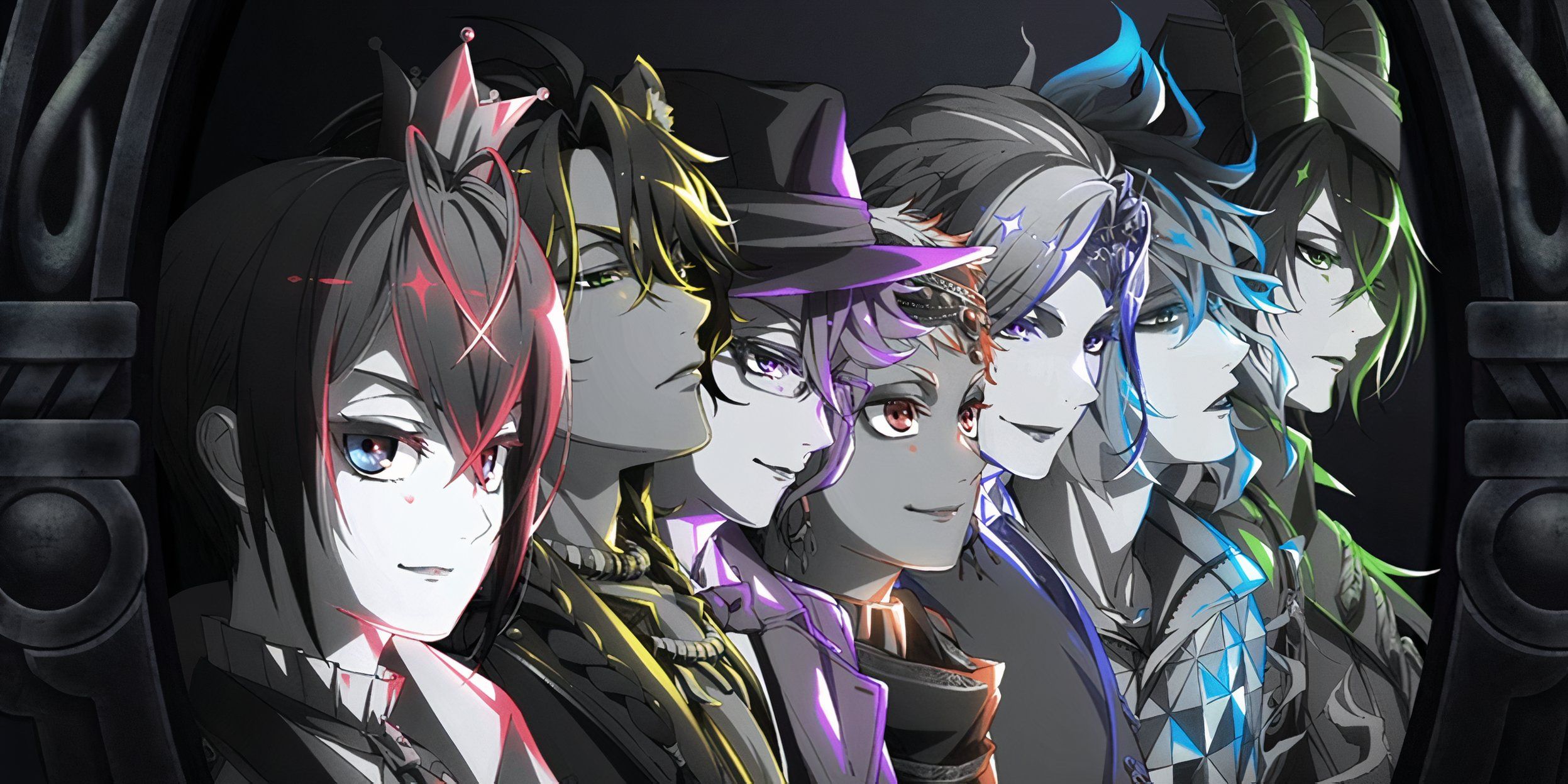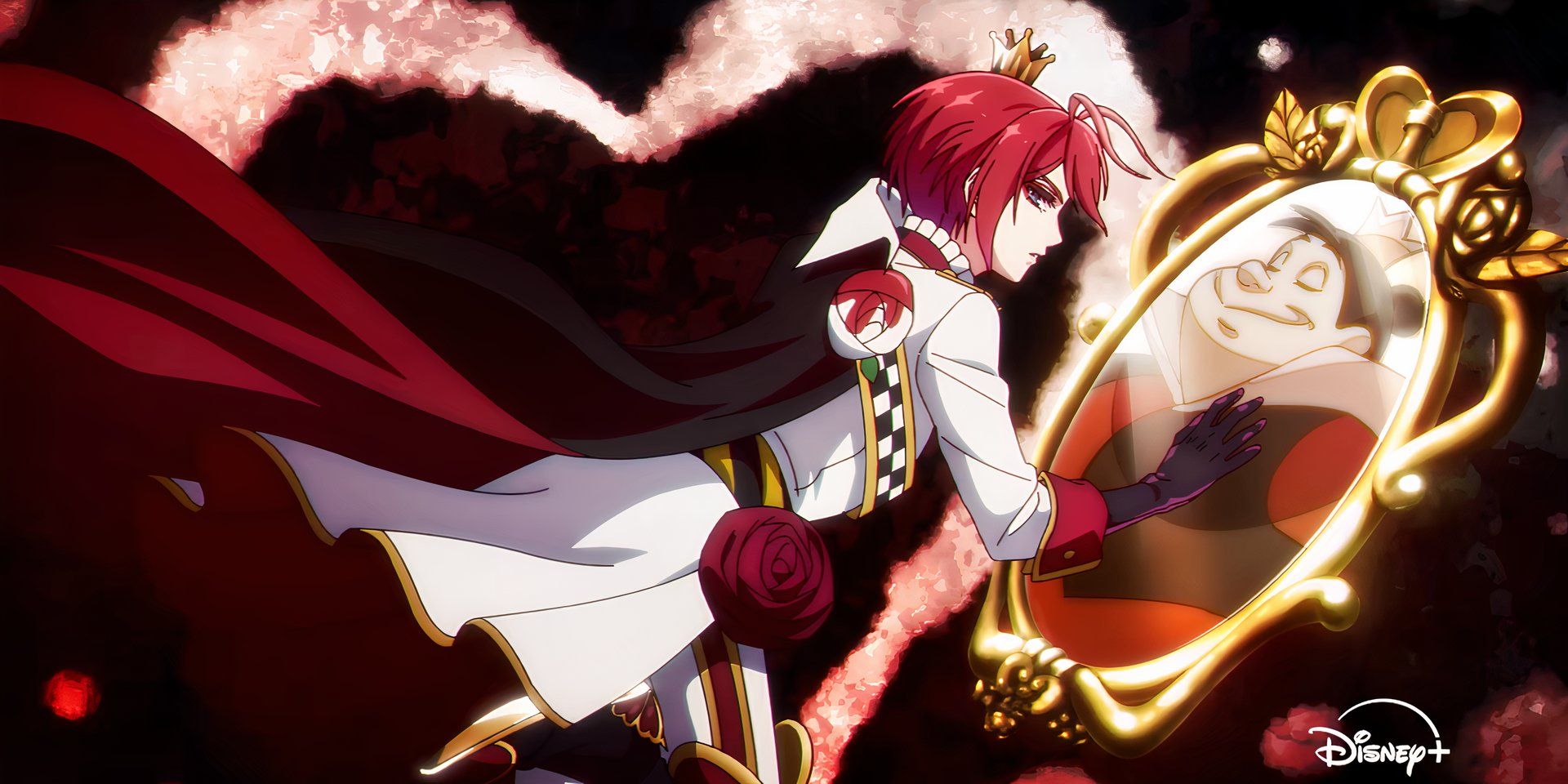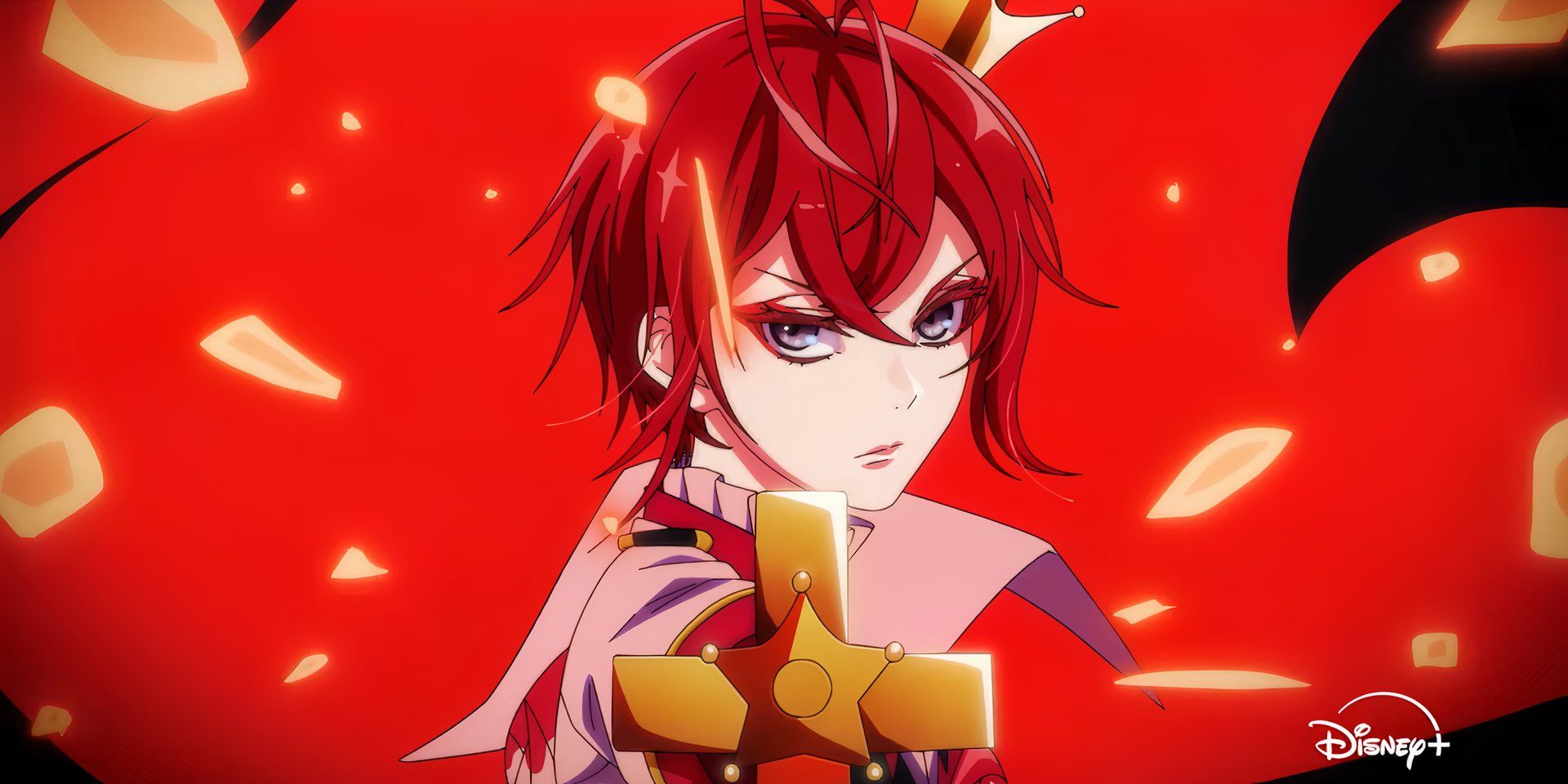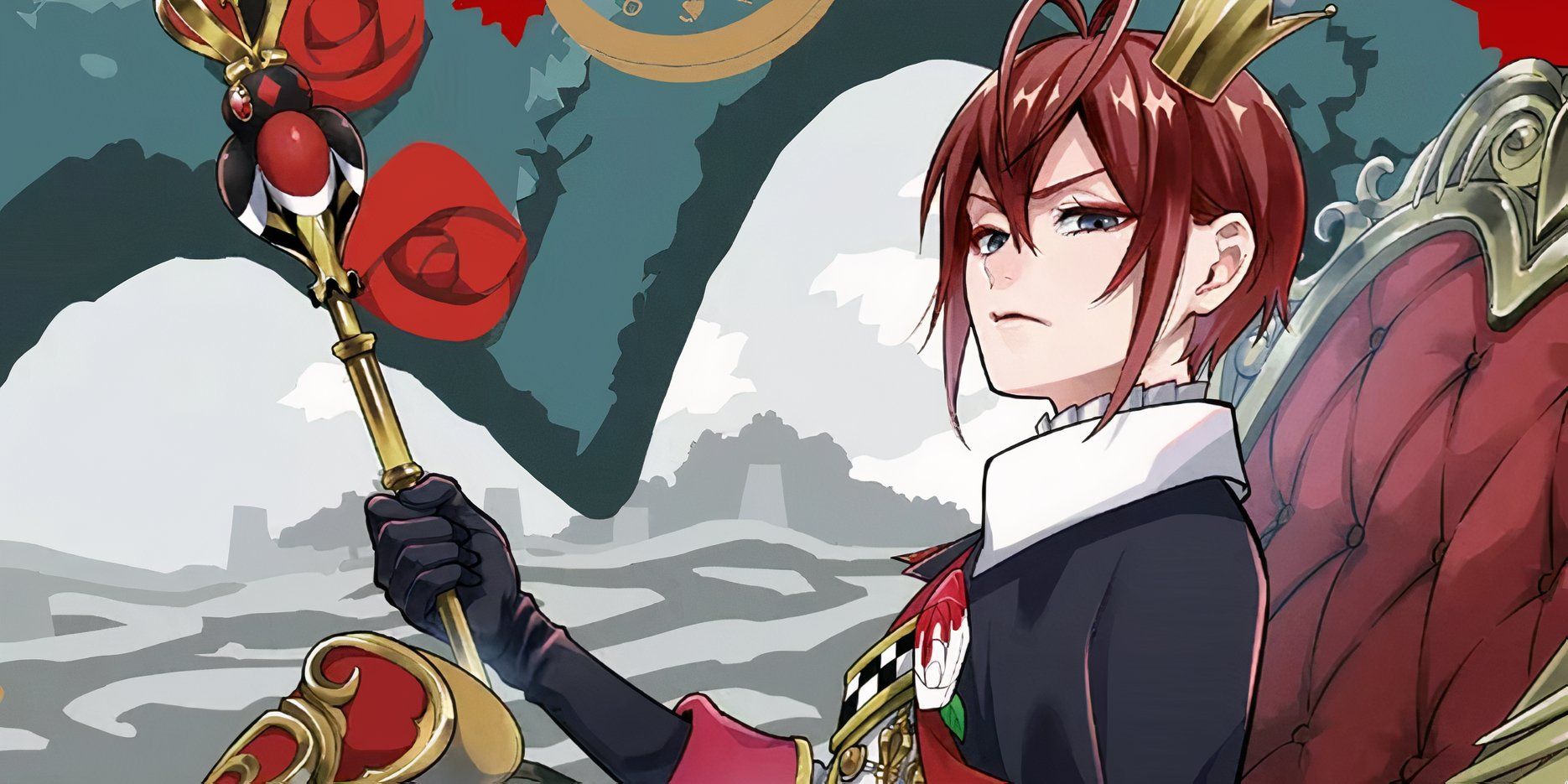
Occasionally, a studio with seemingly no chance of success manages to create something truly special. Disney’s Twisted-Wonderland has the potential to be that project. It’s entering a market already prepared to embrace something like this. Over the last decade, fans have become accustomed to ‘isekai’ stories – worlds built on different rules and unusual storylines. This means Twisted-Wonderland doesn’t need to overly explain its concept, unlike similar shows from ten years ago. Viewers already understand how to approach this type of story, so the key now is whether the show itself is well-made.
One of the biggest strengths of Twisted-Wonderland is its use of instantly recognizable Disney villains. These characters are cultural icons, and bringing them to the anime genre – where strong character connections are vital – isn’t just a fun idea, it’s a smart move. This isn’t about simply asking what a Disney-anime crossover would look like; it’s about reimagining beloved, complex Disney characters within a new genre. The involvement of a respected anime creator makes it clear this project is serious. It’s not a quick cash-grab or a poorly thought-out adaptation, but a genuine anime created by someone who understands the medium. This, along with perfect timing and a receptive audience, is why Twisted-Wonderland is poised to become a major hit.
Disney Villains Meet Isekai Anime in Twisted-Wonderland



Twisted-Wonderland is an anime based on a popular game, created through a partnership between Aniplex and Disney. The story takes place at Night Raven College, a school where each dorm represents a famous Disney villain like Scar, Maleficent, and the Queen of Hearts. The main character is unexpectedly transported to this world and must navigate a reality with unfamiliar rules.
Twisted Wonderland isn’t creating something entirely new; it’s a natural progression of its original idea. The crossover works so well because Disney villains are larger-than-life characters, ideal for a fantastical world. They’re not complex in a quiet way; they embody grand ideas like ambition and pride, which make for a compelling setting for a character transported to another world.
Bringing all these familiar Disney characters together in a school environment naturally creates opportunities for power dynamics and conflict. The core idea of isekai – someone’s identity being thrown into a new and challenging world – is all about clashes with existing structures, and villains are inherently disruptive. Because Twisted-Wonderland started as a game, it already understands what anime fans enjoy: strong character archetypes, established lore, and a sense of community that goes beyond just watching a story. The game’s initial popularity proves people love seeing beloved characters placed in unexpected situations, and who could be more beloved than Disney’s iconic cast?
The game avoids overly self-referential jokes, and the anime adaptation will probably do the same. Twisted-Wonderland doesn’t rely on nostalgia to get a reaction. While based on Disney characters, it creates its own unique story and background, using the original characters’ core values as a foundation. Throughout the story, the villains and their worlds are reimagined and given new meaning.
2025 Is the Perfect Time for Disney’s Anime Debut
Launching Twisted-Wonderland as an anime in 2015 would have been a major gamble, as it would have been seen as a risky move for a large company. However, by 2025, the anime landscape has changed. Audiences are now accustomed to and even welcome projects that come from outside of Japan. Global streaming services have established anime as a major international force, and viewers readily embrace collaborations between different creative industries. Disney isn’t breaking new ground with this release; it’s entering a market that’s been prepared and open for years.
The current popularity of this show is also due to where the isekai anime genre stands right now. The initial excitement over simply having a character transported to another world has faded. In 2025, isekai anime need to be more polished and unique. Shows are now evaluated on how original their core idea is – simply being another isekai story isn’t enough. A story focusing on villains attending an academy perfectly fits this need. Twisted-Wonderland offers a fresh take on the genre without confusing viewers who are already familiar with the basics. It’s an innovative concept that still feels accessible, and that’s what’s working well with audiences today.
Viewers are getting tired of stories where the main character is always overwhelmingly powerful, as it removes any real sense of tension. Twisted-Wonderland avoids this by focusing on the social dynamics of a school setting – think dorm life and rivalries – instead of an all-powerful hero. Plus, Disney’s strong global reach is coming at the perfect time for anime, which isn’t looking to be ‘saved,’ but rather to reach a wider audience. If this project had come out when anime was still struggling for acceptance, it might have been seen as just a money-making scheme. Luckily, the current environment is much more favorable for its success.
The Mobile Game Already Proved There’s a Hungry Audience
Even before the anime was revealed, Twisted-Wonderland was tested with players. This mobile game wasn’t a typical Disney collaboration; it quickly built a dedicated and enthusiastic community. The game fostered player-created strategies and consistent fan content – hallmarks of franchises that successfully expand into other forms of media, like anime. While a game might initially grab attention, it’s a strong fanbase that keeps players engaged, and Twisted-Wonderland clearly has that.
Many games with similar mechanics have characters that feel interchangeable, but this project makes sure every character and their background is immediately clear to players. Because the characters are designed as villains, they tap into familiar tropes, allowing players to connect with them quickly and easily. This fast connection is key because it makes the story more popular and easier to adapt into other forms of media. The success of the Twisted-Wonderland game has confirmed what producers hoped: people are truly invested in these villainous characters and want to see more of them. The game’s dedicated and active fanbase proves this isn’t just a fleeting interest – the characters are genuinely popular, and the concept has the potential to grow.
Importantly, the game’s success wasn’t built on simply reminding people of past Disney favorites. Discussions among fans centered on how characters interacted and developed, not just on recalling old memories. This is significant because while nostalgia fades, dedicated fans tend to stay loyal. When a project starts with an engaged fanbase—people who already act like fans, not just buyers—it has a better chance of succeeding. The key is to deliver a final product that meets or surpasses what those fans hope for.
Yana Toboso’s Track Record Speaks for Itself
Yana Toboso, the creator of Twisted-Wonderland, instantly brought a level of quality to the anime that most mobile game adaptations lack. Her previous manga demonstrated her skill in crafting dramatic, villainous characters that still feel human and emotionally engaging. She excels at both visual design and storytelling structure, making her ideal for developing the game’s concept and characters. Toboso portrays morality as something people show rather than feel, and creates worlds where strict rules clash with characters driven by strong emotions. This is precisely the kind of dynamic needed for an anime based on Disney villains to truly succeed.
What sets Toboso apart from many creators is their long-term success. Black Butler hasn’t just had a moment – it’s lasted through changing trends, different versions, shifts in its overall feel, and even changes in who’s watching. This shows Toboso knows how to build stories with lasting appeal, not just fleeting popularity. The series has remained strong for years, and its solid foundation, rather than just flashy visuals, suggests it will be a major hit in the 2025 anime landscape.
Toboso, along with directors Shin Katagia (known for Wolf Girl and Black Prince) and Takahiro Natori (My Hero Academia), successfully addresses a common issue with anime funded by big Western brands: the fear that creative freedom is lost. Viewers often worry that these brands heavily control the artistic process. However, Toboso’s clear and unique writing style proves that isn’t the case. Fans familiar with her work can easily identify her distinct touches, like her compelling characters and themes of honor and harshness.
Even before the anime’s first trailer was released, the involvement of key creative talent suggested that Twisted-Wonderland would be a thoughtfully made and ambitious project. The anime clearly understands and respects the animation medium, and aims to push boundaries within it. Everything seems to be in place for Twisted-Wonderland to be a success – now it just needs to deliver a strong final product.
Read More
- Mobile Legends: Bang Bang (MLBB) Sora Guide: Best Build, Emblem and Gameplay Tips
- Clash Royale Best Boss Bandit Champion decks
- Best Hero Card Decks in Clash Royale
- All Brawl Stars Brawliday Rewards For 2025
- Best Arena 9 Decks in Clast Royale
- Vampire’s Fall 2 redeem codes and how to use them (June 2025)
- Brawl Stars December 2025 Brawl Talk: Two New Brawlers, Buffie, Vault, New Skins, Game Modes, and more
- Clash Royale Witch Evolution best decks guide
- Clash Royale Furnace Evolution best decks guide
- Call of Duty Mobile: DMZ Recon Guide: Overview, How to Play, Progression, and more
2025-10-25 05:13